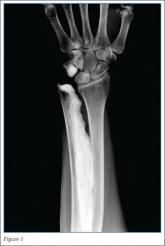Article

Emergency Imaging: Wrist injury in a woman with multiple sclerosis
- Author:
- Joanna Escalon, MD
- Michael L. Loftus, MD
- Keith Hentel, MD
As a significant number of causes and events mimic childhood seizure activity, obtaining a thorough history and detailed description of the...
